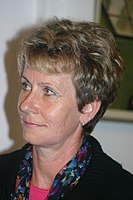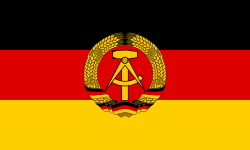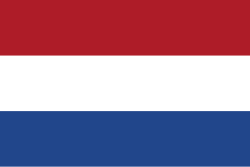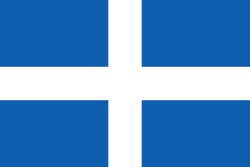Leichtathletik-Europameisterschaften 1978/Speerwurf der Frauen
| 12. Leichtathletik-Europameisterschaften | |
|---|---|
 | |
| Disziplin | Speerwurf der Frauen |
| Stadt | Prag, heute |
| Stadion | Stadion Evžena Rošického |
| Teilnehmerinnen | 16 Athletinnen aus 11 Ländern |
| Wettkampfphase | 31. August (Qualifikation) 1. September (Finale) |
| Medaillengewinnerinnen | |
| Ruth Fuchs ( | |
| Tessa Sanderson ( | |
| Ute Hommola ( | |
Der Speerwurf der Frauen bei den Leichtathletik-Europameisterschaften 1978 wurde am 31. August und 1. September 1978 im Stadion Evžena Rošického von Prag ausgetragen.
Mit Gold und Bronze gab es in diesem Wettbewerb zwei Medaillen für die Sportlerinnen aus der DDR. Europameisterin wurde die Titelverteidigerin und zweifache Olympiasiegerin (1972/1976) Ruth Fuchs, die mit ihrem Siegeswurf ihren eigenen Europarekord um vier Zentimeter verbesserte. Sie gewann vor der Britin Tessa Sanderson. Bronze ging an Ute Hommola.
Rekorde
Bestehende Rekorde
| Weltrekord | 69,32 m | Fürth, BR Deutschland (heute Deutschland) | 11. September 1977[1] | |
| Europarekord | 69,12 m | Ost-Berlin (heute Berlin), DDR (heute Deutschland) | 10. Juli 1976[2] | |
| Meisterschaftsrekord | 67,22 m | EM Rom, Italien | 2. September 1974 |
Rekordverbesserungen
Der bestehende EM-Rekord wurde zweimal verbessert und außerdem gab es einen neuen Europarekord.
- Meisterschaftsrekorde:
- 67,56 m – Ruth Fuchs (DDR), Finale am 1. September, zweiter Versuch
- 69,16 m – Ruth Fuchs (DDR), Finale am 1. September, fünfter Versuch
- Europarekord:
- 69,16 m – Ruth Fuchs (DDR), Finale am 1. September, fünfter Versuch
Legende
Kurze Übersicht zur Bedeutung der Symbolik – so üblicherweise auch in sonstigen Veröffentlichungen verwendet:
| – | verzichtet |
| x | ungültig |
| CR | Championshiprekord |
| ER | Europarekord |
Qualifikation
31. August 1978
Sechzehn Wettbewerberinnen traten in zwei Gruppen zur Qualifikationsrunde an. Genau zwölf von ihnen (hellblau unterlegt) übertrafen die Qualifikationsweite für den direkten Finaleinzug von 57,00 m. Damit war die Mindestzahl von zwölf Finalteilnehmerinnen exakt erreicht. Die qualifizierten Athletinnen trugen am darauffolgenden Tag gemeinsam das Finale aus.

| Platz | Name | Nation | Resultat (m) | 1. Versuch (m) | 2. Versuch (m) | 3. Versuch (m) |
| 1 | Nina Nikanorowa | 63,18 | 52,82 | 63,18 | – | |
| 2 | Ruth Fuchs | 60,36 | 60,36 | – | – | |
| 3 | Éva Ráduly-Zörgő | 59,84 | 53,76 | 59,84 | – | |
| 4 | Jadvyga Putinienė | 59,84 | x | 50,52 | 59,84 | |
| 5 | Ingrid Thyssen | 59,62 | 59,62 | – | – | |
| 6 | Iwanka Wantschewa | 59,34 | 48,04 | x | 59,34 | |
| 7 | Tessa Sanderson | 59,04 | 59,04 | – | – | |
| 8 | Ute Richter | 59,00 | 59,00 | – | – | |
| 9 | Eva Helmschmidt | 58,74 | 58,74 | – | – | |
| 10 | Bernadette Blechacz | 58,38 | 51,14 | 53,06 | 58,38 | |
| 11 | Elena Burgárová | 57,40 | 54,74 | 57,40 | – | |
| 12 | Ute Hommola | 57,18 | 57,18 | – | – | |
| 13 | Sofia Sakorafa | 56,56 | x | x | 56,56 | |
| 14 | Tsvetanka Mikhailova | 54,72 | 51,98 | x | 54,72 | |
| 15 | Giuliana Amici | 52,66 | x | 50,34 | 52,66 | |
| 16 | Lidia Berkhout | 52,14 | 46,14 | x | 52,14 |
Finale
1. September 1978, 17:00 Uhr
| Platz | Name | Nation | Resultat (m) | 1. Versuch (m) | 2. Versuch (m) | 3. Versuch (m) | 4. Versuch (m) | 5. Versuch (m) | 6. Versuch (m) |
| 1 | Ruth Fuchs | 69,16 ER | 59,10 | 67,56 CR | 51,56 | x | 69,16 ER/CR | 62,84 | |
| 2 | Tessa Sanderson | 62,40 | 62,40 | x | x | 58,76 | 60,62 | 57,96 | |
| 3 | Ute Hommola | 62,32 | 62,32 | x | 55,74 | 56,16 | 55,16 | 58,44 | |
| 4 | Ute Richter | 62,04 | 55,86 | 61,44 | 62,04 | 59,14 | 57,26 | 58,88 | |
| 5 | Éva Ráduly-Zörgő | 61,14 | 59,32 | 51,74 | 61,14 | 55,20 | 57,92 | 56,92 | |
| 6 | Eva Helmschmidt | 60,96 | 60,96 | 57,94 | x | 60,04 | 57,06 | 60,64 | |
| 7 | Ingrid Thyssen | 60,18 | 60,18 | 55,76 | 54,86 | 55,38 | 56,76 | 51,66 | |
| 8 | Bernadette Blechacz | 60,14 | 60,14 | 58,36 | x | 55,68 | x | x | |
| 9 | Nina Nikanorowa | 57,50 | 57,50 | 56,54 | 54,86 | nicht im Finale der besten acht Werferinnen | |||
| 10 | Jadvyga Putinienė | 57,28 | 56,94 | 56,14 | 57,28 | ||||
| 11 | Elena Burgárová | 57,22 | 53,82 | 56,12 | 57,22 | ||||
| 12 | Iwanka Wantschewa | 53,10 | 53,10 | x | x | ||||
- Vizeeuropameisterin Tessa Sanderson – sie setzte ihre Karriere noch über viele Jahre fort, ihr größter Erfolg: der Olympiasieg 1984
- Éva Ráduly-Zörgő kam auf den fünften Platz und errang auch in den Jahren nach 1978 weitere vordere Platzierungen bei Olympischen Spielen und Weltmeisterschaften
Weblinks
- Praha European Championships, european-athletics.org, abgerufen am 24. November 2022
- European Championship 1978 Praga, Women Javelin Throw, todor66.com, abgerufen am 24. November 2022
- Track and Field Statistics, EM 1978, trackfield.brinkster.net (englisch), abgerufen am 24. November 2022
- European Championships Munich 2022 - Statistics Handbook Athletics, 13th European Athletics Championships Praha TCH 29 AUG–03 SEP 1978, Stadion Evžena Rošického, Women Javelin Throw, S. 591, englisch (PDF, 30.741 KB), downloads.european-athletics.com, abgerufen am 24. November 2022
Einzelnachweise und Anmerkungen
- ↑ Athletics - Progression of outdoor world records (Women), Javelin throw - Women, sport-record.de (englisch), abgerufen am 24. November 2022
- ↑ Athletics - Progression of outdoor European records, Javelin throw - Women, sport-record.de (englisch), abgerufen am 24. November 2022
Auf dieser Seite verwendete Medien
Pictograms of Olympic sports – . This is an unofficial sample picture. Images of official Olympic pictograms for 1948 Summer Olympics and all Summer Olympics since 1964 can be found in corresponding Official Reports.
Die Staatsflagge der Deutschen Demokratischen Republik, vom 1. Oktober 1959 bis 3. Oktober 1990
Flagge des Vereinigten Königreichs in der Proportion 3:5, ausschließlich an Land verwendet. Auf See beträgt das richtige Verhältnis 1:2.
Flagge des Vereinigten Königreichs in der Proportion 3:5, ausschließlich an Land verwendet. Auf See beträgt das richtige Verhältnis 1:2.
(c) I, Cmapm, CC BY-SA 3.0
The flag of the Soviet Union (1955-1991) using a darker shade of red.
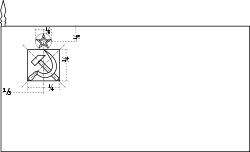
(c) I, Cmapm, CC BY-SA 3.0
The flag of the Soviet Union (1955-1991) using a darker shade of red.

Flag of Romania, (21 August 1965 - 22 December 1989/officialy 27 December 1989).

Construction sheet of the Flag of Romania as depicted in Decree nr. 972 from 5 November 1968.
- l = 2/3 × L
- C = 1/3 × L
- S = 2/5 × l
Autor/Urheber: Scroch, Lizenz: CC BY-SA 3.0
Flag of Bulgaria (1971-1990). Flag of Bulgaria with Bulgarian coat from 1971.
Autor/Urheber: Scroch, Lizenz: CC BY-SA 3.0
Flag of Bulgaria (1971-1990). Flag of Bulgaria with Bulgarian coat from 1971.
Flag of Second Polish Republic and later People's Republic of Poland in period from March 29, 1928 to March 10, 1980. Red shade used here is HTML "vermilion" #E34234. Proportion 5:8.
Flag of Second Polish Republic and later People's Republic of Poland in period from March 29, 1928 to March 10, 1980. Red shade used here is HTML "vermilion" #E34234. Proportion 5:8.
Autor/Urheber: Original uploader and author was Indianathletics at en.wikipedia, Lizenz: CC BY-SA 3.0
Tessa Sanderson giving interview after running Beijing Olympic Torch Relay in London at Stratford on April 6, 2008
(c) Petr Novák, Wikipedia, CC BY-SA 3.0
Stadion Evžena Rošického from south
(c) Bundesarchiv, Bild 183-U0811-0029 / CC-BY-SA 3.0
Autor/Urheber: euranet_plus, Lizenz: CC BY-SA 2.0
Fit for purpose? Or beyond repair? Europe’s border management framework has developed a lot over the past decade with the creation of the Schengen Information System, the Visa Information System and the border agency Frontex. Yet, all these instruments already seem overwhelmed by the rapid influx of immigrants and refugees and by the ever present threat of terrorism.
The Euranet Plus and SKAI panels asked if it’s the fault of the EU border member states, such as Greece, Hungary, Italy, that the influx of refugees was so huge; or it is the fault of broader EU failings? The panels also considered whether the EU should accelerate negotiations with states such as Turkey, FYROM and Serbia, in order to convince them to do more to stop the refugees?
The English and Greek language sections asked if Frontex’ tasks of budget, organisation ad regulation are sufficient to get the job done? And, what should the role of Frontex be in Eurosur, the information-exchange framework designed to improve the management of Europe’s external borders? Is a real European system of border guards needed?
The debate was jointly produced by Euranet Plus and Skaï Radio, Greek member of the Euranet Plus network, and was hosted by Skaï Radio’s Stavros Samouilidis, in Greek and in English. A student from the Romanian campus radio station affiliated to Euranet Plus also joined the debate.
Get all the details and the video recording at euranetplus-inside.eu/citizens-corner-debate-migration-ma...
Guests: Dimitrios PAPADIMOULIS, MEP, Greece, European Parliament Vice-President, Confederal Group of the European United Left – Nordic Green Left, www, @papadimoulis Eva KAILI, MEP, Greece, Group of the Progressive Alliance of Socialists and Democrats in the European Parliament, @EvaKaili Miltiadis KYRKOS, MEP, Greece, Group of the Progressive Alliance of Socialists and Democrats in the European Parliament, Substitute of the Committee on Civil Liberties, Justice and Home Affairs, www, @miltos_kyrkos Georgios KYRTSOS, MEP, Greece, Group of the European People’s Party (Christian Democrats), www, @GiorgosKyrtsos Sofia SAKORAFA, MEP, Greece, Confederal Group of the European United Left – Nordic Green Left, Member of the Committee on Foreign Affairs, www, @SofiaSakorafa
Evangelia KEKELEKI, Greece, Member of the European Economic and Social Committee, Various Interests Group (Group III)Autor/Urheber: László Horváth , Lizenz: CC BY-SA 4.0
Ráduly-Zörgő Éva (1954–) logopédus, iskolapszichológus, sportvezető, olimpikon gerelyhajító



